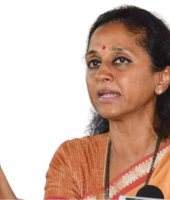Benjamin Netanyahu’s Fight for Power, New Coalition & 2 Yrs of Political Deadlock: Tracing the Israel Crisis
Israel has had four elections in two years as Benjamin Netanyahu clung onto power. The era of Israel’s longest serving leader appeared to be nearing an end as opposition leader Yair Lapid said he could form the next government. Here is a timeline of the crisis: Impasse In elections on April 9, 2019, Netanyahu hopes
Israel has had four elections in two years as Benjamin Netanyahu clung onto power. The era of Israel’s longest serving leader appeared to be nearing an end as opposition leader Yair Lapid said he could form the next government.
Here is a timeline of the crisis:
Impasse
In elections on April 9, 2019, Netanyahu hopes to prevail again, despite being dogged by corruption allegations.
Netanyahu’s Likud and the Blue and White alliance of ex-military chief and centrist challenger Benny Gantz finish neck-and-neck with 35 seats each.
Parliament chooses Netanyahu, backed by smaller right-wing parties, to try to form a majority government.
But after weeks of political bargaining, he is unable to command a majority in the 120-seat parliament. The deadline expires and the Knesset agrees to hold a new election.
Another deadlock
The next election on September 17 is another tight race, with Gantz’s party at 33 seats against Likud’s 32.
Netanyahu proposes a unity government, but Gantz refuses to join, citing his rival’s potential indictment on corruption charges.
In October Netanyahu announces he has failed to get enough seats. Gantz also throws in the towel a month later.
On November 21 the attorney general charges Netanyahu with bribery, fraud and breach of trust. It is the first time a sitting prime minister faces trial in Israel.
Netanyahu rejects the charges, saying they are an attempt to remove him.
On December 11, as the deadline passes for parliament to find a new government, lawmakers call a new election for March 2, 2020.
Third election in a year
This time around Likud wins the most seats — 36 against 33 for Gantz’s party. On March 16, Gantz, with initial pledges of support from 61 lawmakers, is nominated to try to form a new government, but fails.
On April 20, with Israel on lockdown against the coronavirus and facing economic crisis, Netanyahu and Gantz announce a deal to form an emergency unity government.
The three-year agreement will allow Netanyahu to stay in office for 18 months. Gantz will then take over as premier for another 18 months before Israel goes back to the polls.
On May 6 Israel’s Supreme Court approves the coalition deal and lawmakers endorse the pact the next day.
But after MPs fail to adopt a budget, parliament is dissolved on December 23, and new elections called for March 2021.
Fourth time lucky?
Israelis return to the polls for a fourth election on March 23. Likud comes out on top with 30 seats.
Within the anti-Netanyahu bloc, the centrist Yesh Atid party, led by former television host Yair Lapid, wins the most seats with 17.
On April 6 President Reuven Rivlin nominates Netanyahu to try to form a government, but voices doubt that any lawmaker will be able to forge a parliamentary majority.
Twelve days later opposition leader Lapid calls for a unity government of the right, centre and left to oust Netanyahu.
On April 20 Netanyahu calls for a direct election to choose Israel’s next prime minister. A week later after he fails yet again to cobble together a coalition, Lapid is tasked with forming a government.
Israeli nationalist hardliner Naftali Bennett says on May 30 that he will join a potential coalition that could end Netanyahu’s rule.
Netanyahu defiantly condemns the alliance against him as opportunistic and “the fraud of the century”.
But on Wednesday, June 2, just minutes ahead of a midnight deadline and after days of horse-trading, Lapid tells the president that he has rallied enough votes to form a coalition government, which would oust Netanyahu.
Read all the Latest News, Breaking News and Coronavirus News here












Comment List